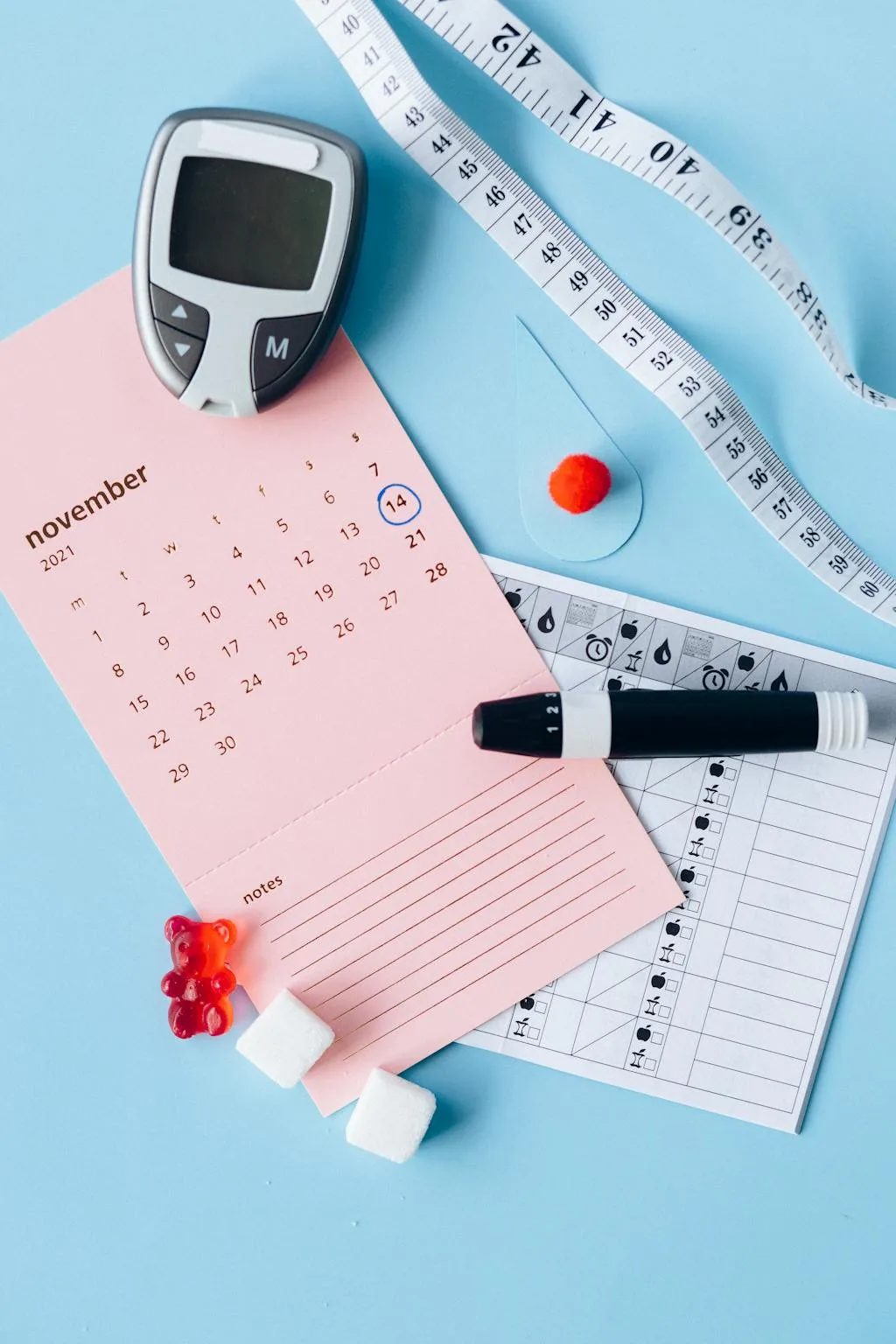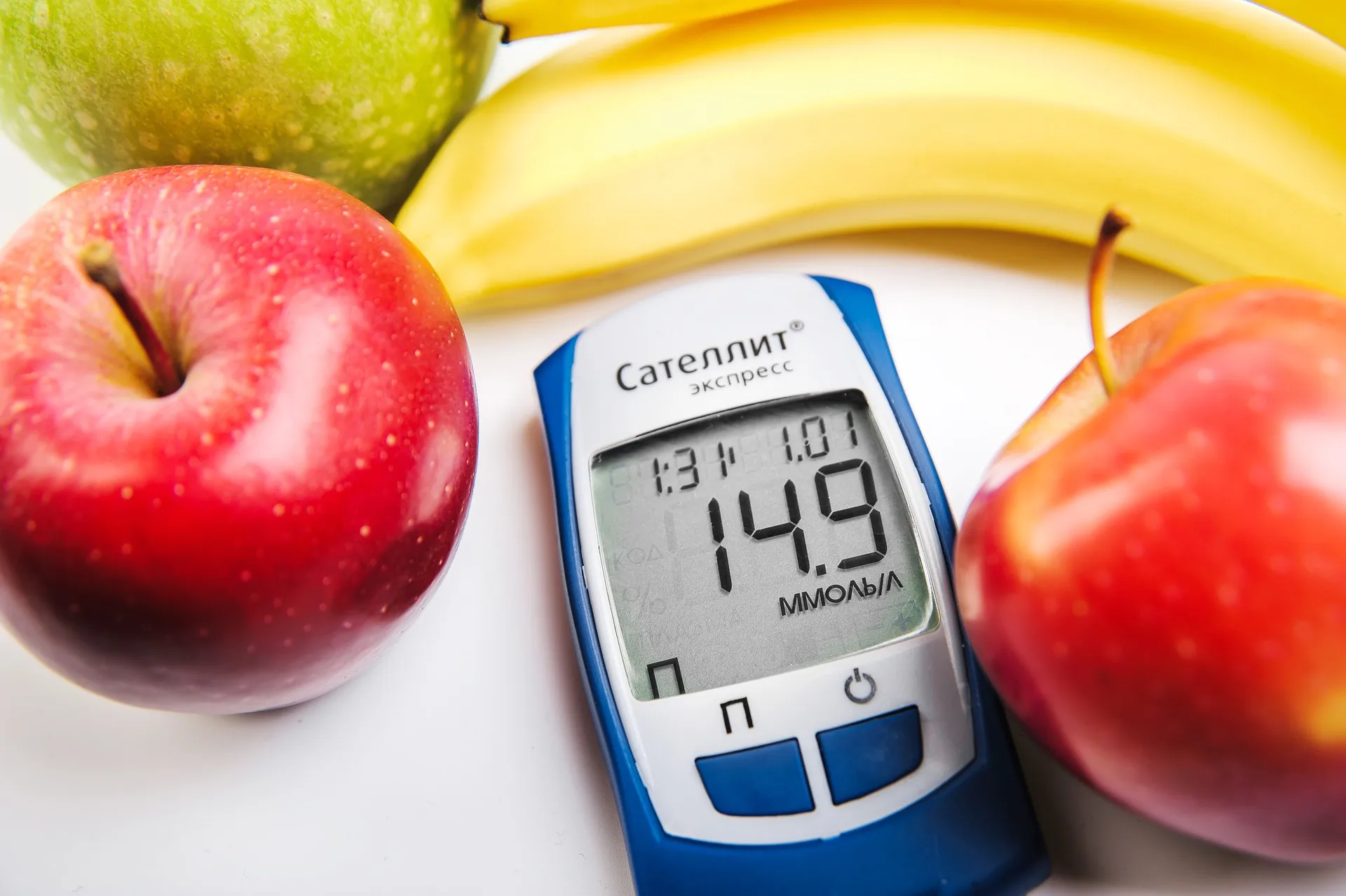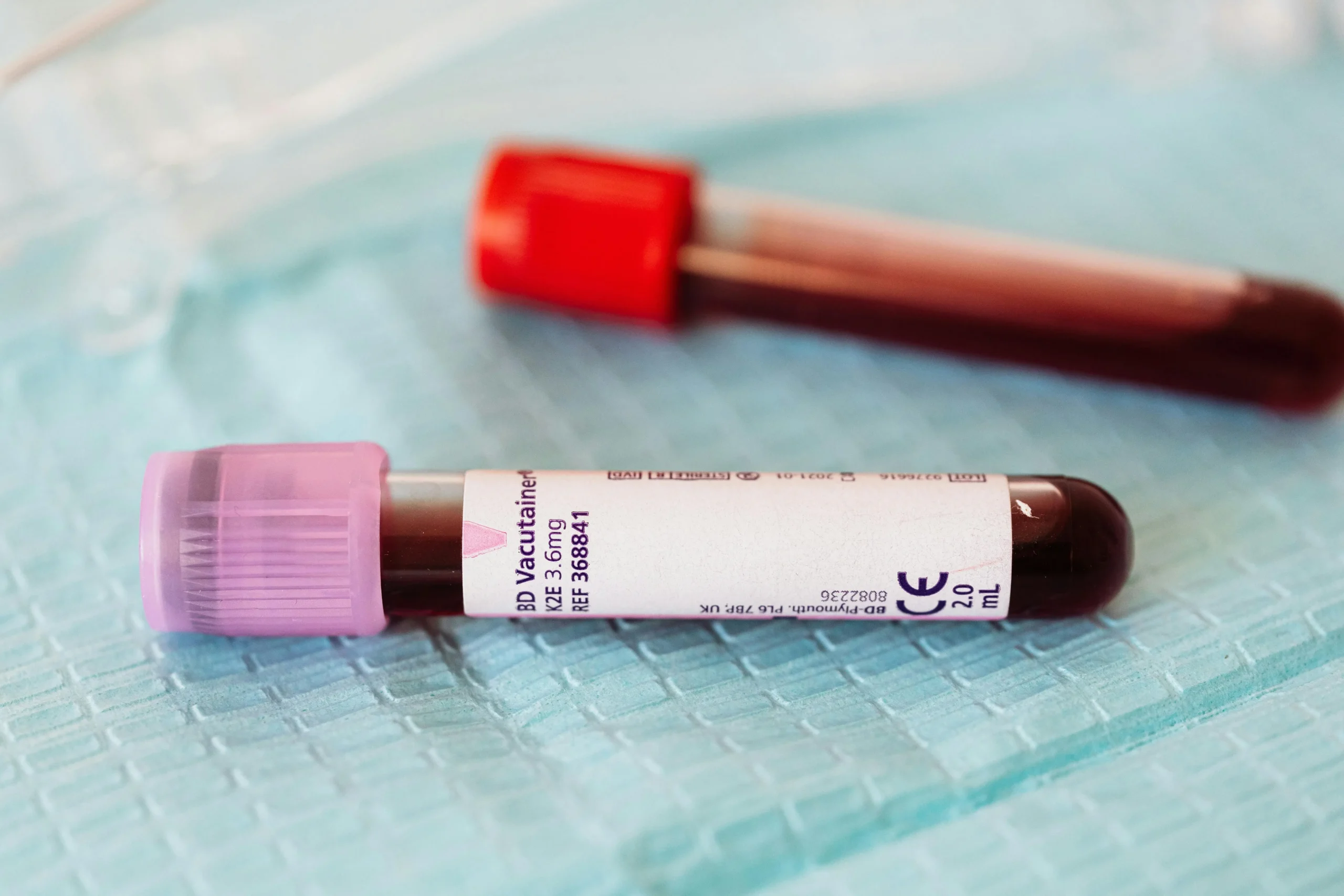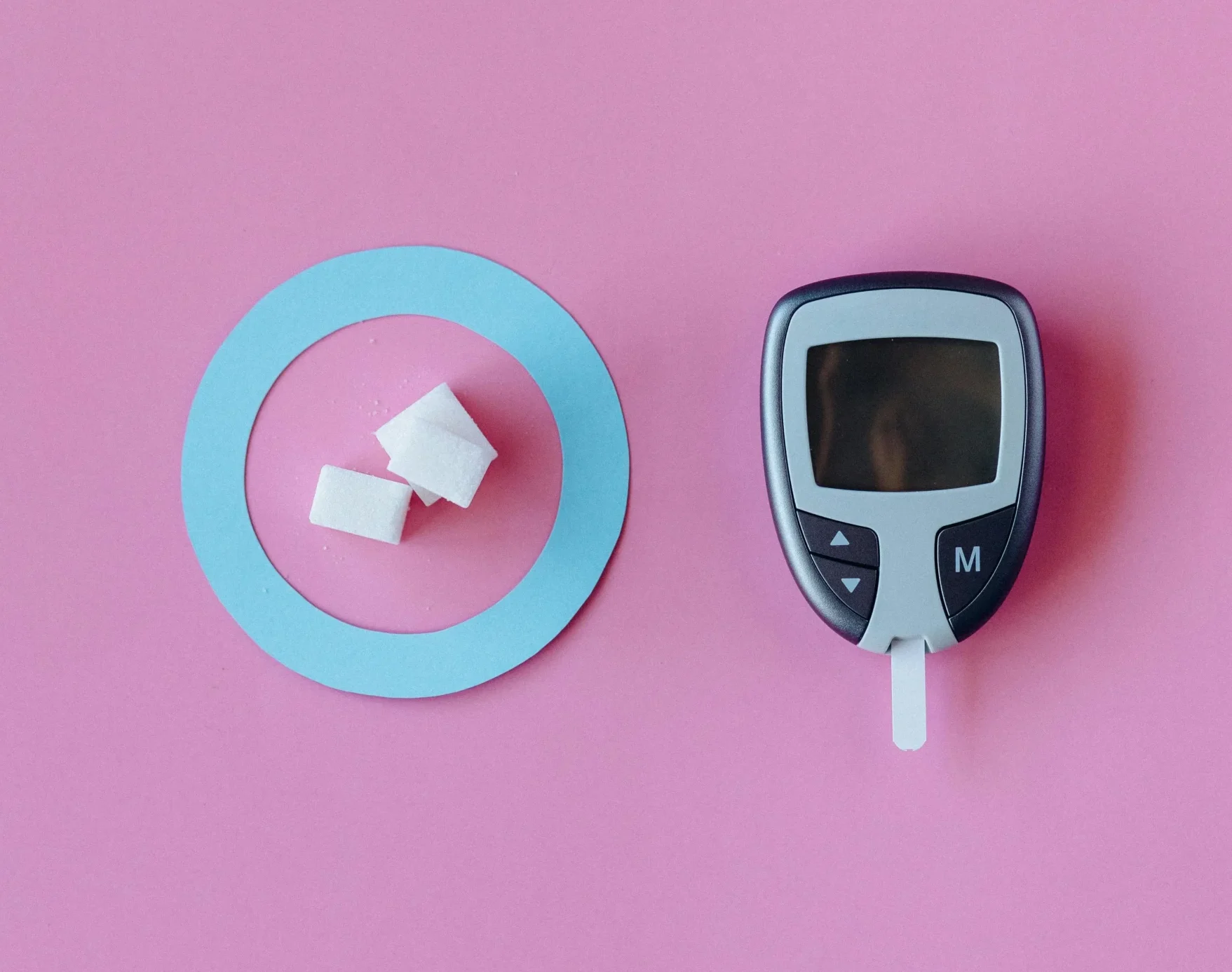Diabetes is a medical condition that causes high blood sugar (glucose) levels in the body.
This happens when there’s a problem with how much insulin your pancreas makes, or how well your cells respond to insulin. The pancreas (a gland in your abdomen close to the stomach) is responsible for making insulin (a hormone which causes sugar to move from the blood into the cells where it can be used).
The 3 major types of diabetes are: type 1, type 2, and gestational diabetes. Most people living with diabetes have type 2 diabetes.
Untreated high blood sugar levels can cause serious issues like nerve damage, stroke, kidney disease, and eye disease. Because of this, a healthcare professional will usually prescribe medications to help keep your blood sugar levels low. In addition to diabetes medications, healthy lifestyle habits such as regular exercise, staying at a healthy weight, and eating a healthy diet are also important for controlling blood sugar levels.
If you have diabetes, the medications you take depend on the type of diabetes, other medical conditions you might have, cost of medications, medication effectiveness, and potential side effects. Some medications are administered as an injection, while most are taken as oral pills. Sometimes, your doctor may prescribe more than one medication to help manage your blood sugar better.
Read on to learn more about the different types of anti-diabetes medications.
Medications for type 1 diabetes
Having type 1 diabetes means your pancreas makes little or no insulin. The medications that can be used to treat type 1 diabetes include:
Insulin
Synthetic (artificial) insulin is typically administered under the skin using an injection, insulin pen, or insulin pump. It can also be injected into a vein (intravenously). Intravenous insulin administration is usually used in the hospital to treat certain diabetes-associated medical emergencies.
Synthetic insulin is classified into different types depending on how quickly it starts working and how long it works. Insulin types include:
I. Rapid-acting insulin
It starts working within 15 minutes and stays active for 3–5 hours.
Types of rapid-acting insulin include:
- Insulin aspart (NovoLog, Fiasp)
- Insulin lispro (Humalog, Admelog)
- Insulin glulisine (Apidra, Apidra Solostar)
- Inhaled insulin (Afrezza)
II. Short-acting insulin
It starts working within 30 minutes and is active for 6–8 hours. Regular (soluble) insulin is the available type of short-acting insulin.
Examples of regular insulin include:
- Humulin R
- Novolin R
- Actrapid
- Myxredlin
III. Intermediate-acting insulin
It starts working within 4 hours and remains active for 16–24 hours. Insulin isophane (NPH) is a type of intermediate-acting insulin.
Examples of insulin isophane include:
- Humulin N
- Novolin N
IV. Long-acting insulin
It starts working within 2 hours and stays active for 24 hours or longer.
Types of long-acting insulin are:
- Insulin detemir (Levemir)
- Insulin glargine (Lantus, Toujeo, Basaglar)
- Insulin degludec (Tresiba)
Possible side effects of insulin therapy include:
- Low blood sugar levels (hypoglycemia)
- Weight gain
- Pain at the injection site
- Lipohypertrophy—lumps caused by accumulation of fat at a site where insulin is repeatedly injected.
Amylin analogs
Amylin analogs are injectable medications that are administered just before meals. They are given alongside meal time insulin.
Pramlintide (SymlinPen, Symlin) is the only FDA approved amylin analog. It lowers blood sugar by delaying emptying of food from your stomach and decreasing the secretion of glucagon, a hormone which increases the amount of glucose released by the liver into the blood.
Pramlintide also suppresses appetite and causes weight loss. Hypoglycemia, nausea, and vomiting are the possible side effects of pramlintide.
Medications for type 2 diabetes
Having type 2 diabetes means your body cells do not respond well to the insulin, and the pancreas cannot produce enough insulin to overcome this resistance. Most of the medications that can be used to treat type 2 diabetes are taken orally, but some are injectables.
Just like type 1 diabetes, some people with type 2 diabetes may need to take insulin and amylin analogs to help control their blood sugar levels better. They are usually given in combination with other blood sugar-lowering drugs.
Medications—other than insulin and pramlintide—that can be used to treat type 2 diabetes include:
Biguanides
They lower blood sugar levels by decreasing the amount of sugar your liver produces and making your body tissues more sensitive to insulin.
Metformin (Glucophage, Glumetza, Riomet) is the most common biguanide. It is often the first medicine prescribed for people with type 2 diabetes. It is also available in combinations with other diabetes medications.
Possible side effects of metformin include:
- Nausea and vomiting
- Diarrhea
- Abdominal pain
- Metallic taste in the mouth
- Low levels of vitamin B12
Sulfonylureas
Sulfonylureas increase insulin release from the pancreas by stimulating special insulin-secreting cells called beta cells.
Examples of sulfonylureas are:
- Glyburide or glibenclamide (Glynase, Diabeta)
- Glipizide (Minodiab, Glucotrol XL)
- Glimepiride (Amaryl)
- Gliclazide (Diamicron)
Side effects of sulfonylureas include:
- Low blood sugar
- Weight gain
- Dizziness
- Nausea
- Headache
Meglitinides
These are short-acting drugs that you take just before a meal to help regulate your after-meal blood sugar. They also increase how much insulin your pancreas releases.
Examples meglitinides are:
- Nateglinide (Starlix)
- Repaglinide (Prandin)
Meglitinides may also cause weight gain and low blood sugar
Alpha-glucosidase inhibitors
These lower your blood sugar levels by blocking the digestion and absorption of starches and other forms of sugar. They are also taken before meals, and are typically taken in addition to other diabetes medications.
Examples of alpha-glucosidase inhibitors are:
- Acarbose (Precose)
- Miglitol (Glyset)
- Voglibose (Voglib)
Side effects of alpha-glucosidase inhibitors include:
- Flatulence (passing gas)
- Bloating
- Diarrhea
- Abdominal pain
Thiazolidinediones (TZDs)
TZDs reduce glucose production from your liver. They also increase how much glucose your muscle and fat cells take up from the blood.
Examples of TZDs are:
- Pioglitazone (Actos)
- Rosiglitazone (Avandia)
Side effects of TZDs include:
- Fluid retention leading to swelling (edema)
- Weight gain
- Increase risk of bone fractures
- Vision problems
- Increased risk of heart failure
Sodium-glucose cotransporter 2 (SGLT2) inhibitors
SGLT2 inhibitors reduce how much sugar your kidneys keep in the body. This increases how much of it you pass into the urine. SGLT2 inhibitors can also be used to treat heart failure.
Examples of SGLT2 inhibitors are:
- Dapagliflozin (Farxiga)
- Empagliflozin (Jardiance)
- Canagliflozin (Invokana)
- Ertugliflozin (Steglatro)
SGLT2 inhibitors may increase your chances of getting urinary tract infections (UTIs), genital yeast infections, and diabetic ketoacidosis (DKA).
Glucagon-like peptide-1 (GLP-1) agonists
These are injectable medications which bind to the GLP-1 receptor and increase insulin release, slow down stomach emptying, and decrease how much glucose the glucose releases into the blood.
Apart from lowering blood sugar, they help with weight loss and may even improve overall cardiovascular health.
Examples of GLP-1 agonists include:
- Liraglutide (Victoza)
- Dulaglutide (Trulicity)
- Exenatide (Byetta, Bydureon)
- Tirzepatide (Mounjaro)
- Semaglutide (Ozempic)
Side effects of GLP-1 agonists include:
- Nausea and vomiting
- Diarrhea
- Headaches
- Gall bladder disease
- Inflammation of the pancreas (pancreatitis)
Dipeptidyl peptidase-4 (DPP-4) inhibitors
Dipeptidyl peptidase-4 is an enzyme that breaks down GLP-1. Therefore, DPP-4 inhibitors indirectly prolong the activity of GLP-1 within the body. They also lower blood sugar by increasing insulin release and reducing glucose release by the liver.
Examples of DPP-4 inhibitors include:
- Sitagliptin (Januvia)
- Saxagliptin (Onglyza)
- Linagliptin (Tradjenta)
- Alogliptin (Nesina)
Side effects of DPP-4 include:
- Headache
- Nasopharyngitis
- Pancreatitis
- Joint pain (arthralgia)
Bile acid sequestrants
They are primarily used to lower blood cholesterol levels. They also lower blood sugar levels by unknown mechanisms. But, it is believed that they affect a certain protein that plays a role in how the body handles cholesterol, glucose, and bile acids.
Colesevelam (Welchol) is the bile acid sequestrant that can be prescribed alongside other diabetes medications to control blood sugar levels.
Side effects of colesevelam include:
- Constipation
- Flatulence
- Stomach upset
- Headaches
Dopamine-2 agonists
Dopamine-2 agonists act on the hypothalamus to reset the natural sleep-wake cycle. This action enables them to reverse glucose resistance and reduce glucose production by the liver.
Bromocriptine (Cycloset) is the only dopamine-2 agonists that can be used to treat type 2 diabetes.
Bromocriptine may cause nausea, vomiting, headache, fatigue, and drowsiness.
Medications for gestational diabetes
Gestational diabetes is where a previously non-diabetic woman develops high blood sugar levels during pregnancy. This happens because certain hormones produced by the placenta alter the body cells’ response to insulin in the blood.
Some people with the condition may need to take insulin to help reduce their blood sugar. Metformin and glyburide may also be used to treat gestational diabetes.
What should I remember?
For type 1 diabetes, insulin is essential to regulate blood sugar levels. People with type 2 diabetes often use oral medications, such as metformin or newer drugs like SGLT2 inhibitors and GLP-1 receptor agonists to improve blood sugar control. These medications work differently but all aim to keep blood sugar within a healthy range.
Medications work best when combined with measures like healthy eating, regular exercise, and staying at a healthy weight. Lifestyle changes help improve medication effectiveness and overall health.
Always consult your doctor to choose the right treatment plan for your unique needs. With the right approach, managing diabetes becomes easier and more effective.












